Lose Abdominal Fat in 60 Days with the DASH Diet

The DASH diet (Dietary Approaches to Stop Hypertension) is a diet designed to prevent or treat blood pressure by limiting sodium and red meat. "The DASH diet helps people lower salt, which contains sodium, in diets," says the Mayo Clinic. "The diet is also rich in nutrients that help lower blood pressure. These include potassium, calcium, magnesium, protein, and fiber." With an emphasis on fruits, vegetables, and whole grains, the DASH diet can also help with weight loss and losing belly fat. Here's how to lose abdominal fat in just 60 days with the DASH diet.
Vegetables
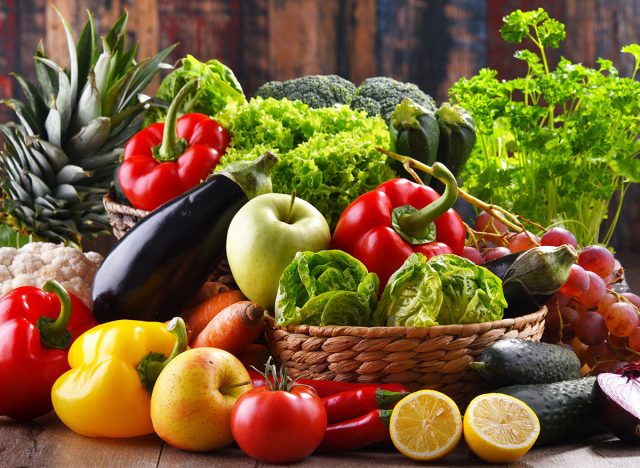
Vegetables are heavily a part of the DASH diet and are good for weight loss. "Cabbage, collard greens, spinach, kale, and other greens are high in nitrates, which have been found to offer blood pressure benefits," according to the National Council on Aging. "It's easier to get your daily dose of greens by varying how you eat them. For example, you can sauté spinach for a tasty side dish, add fennel to soup, or bake a batch of kale chips in the oven."
Fruit
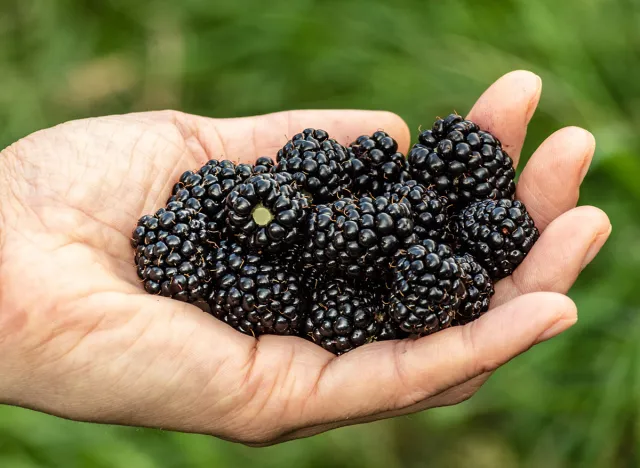
Fruit is part of the diet, and certain types are also great for blasting belly fat. Low-sugar fruits such as raspberries, blackberries, and strawberries are full of antioxidants and anthocyanins while being low-calorie. "Potassium is an essential mineral that helps the body get rid of sodium, relaxes blood vessels, and lowers blood pressure," says the NCOA. "Just one medium-sized banana packs a powerful potassium punch: about 420 milligrams"
Whole Grains
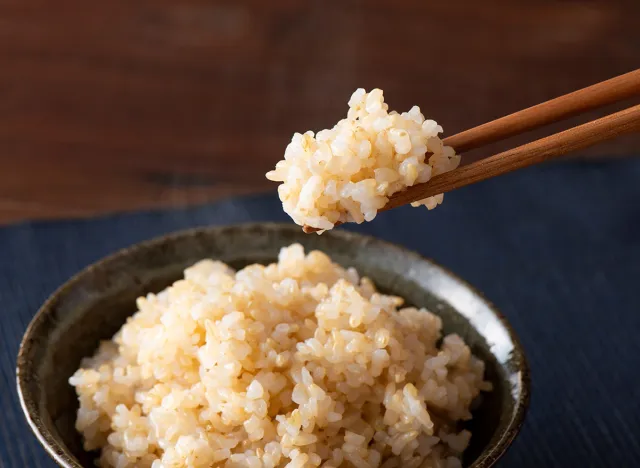
Whole grains are recommended on the DASH diet and can also help with weight loss. "Regularly eating more whole-grain foods might lower the risk of high blood pressure, also called hypertension," Katherine Zeratsky, RD, LD, tells the Mayo Clinic. "Eating more whole-grain foods offers many health benefits. It can help manage weight since whole-grain foods have fiber, which can make you feel full longer."
Fat-Free or Low-Fat Dairy
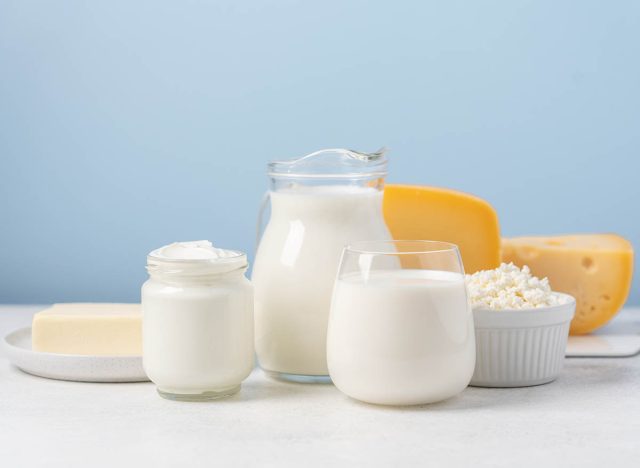
"A recent study showed that yogurt may produce positive blood pressure outcomes for those with hypertension," says the NCOA. "This is attributed to its high amounts of the minerals calcium, potassium, and magnesium—all thought to help regulate blood pressure. Look for unsweetened natural and Greek yogurts, which can be blended with fruits, seeds, and nuts for a healthy breakfast or snack."
RELATED: 10 Healthy Foods That Aren't Actually Healthy
Fish
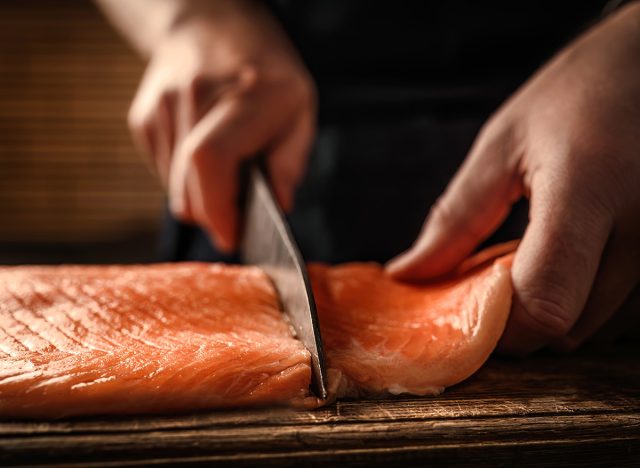
Fish is an ideal belly fat-blasting food and part of the DASH diet. "Salmon and mackerel are packed with heart-healthy omega-3 fatty acids and vitamin D, nutrients that can help lower and regular blood pressure," says the NCOA. "Just lightly season your favorite filet, add a dash of olive oil, and broil in the oven."
Beets
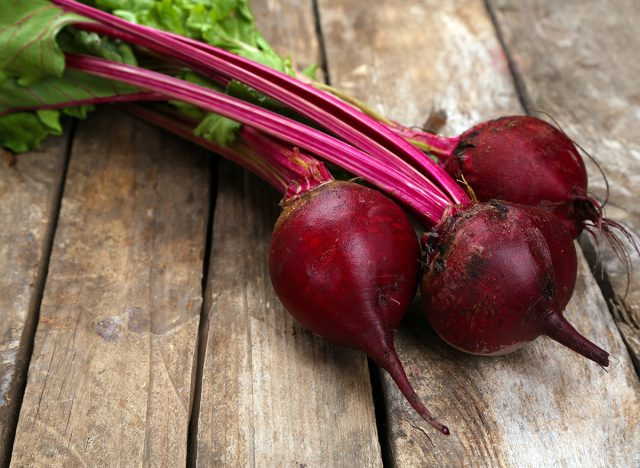
Beets are high in fiber, which is good for weight loss. "This root vegetable is high in nitrates, which the body converts into nitrous oxide, a molecule that's been shown to reduce systolic blood pressure," says the NCOA. "Try beets as a side dish or add it raw to salads. You can even purchase beetroot juice (with no added sugar) to drink on its own or add to smoothies."
Beans
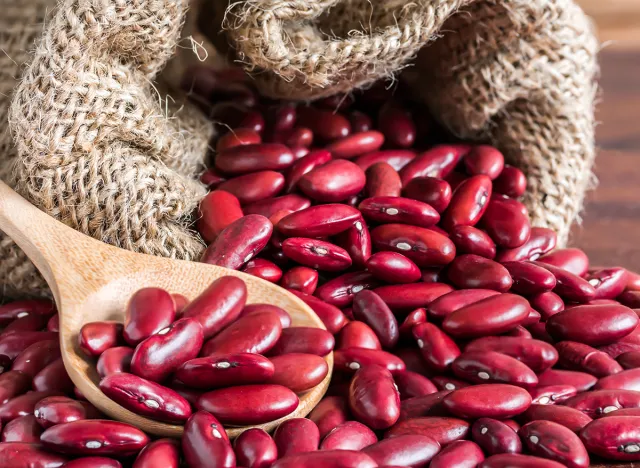
Legumes are good for weight loss and for blood pressure. "If you use canned beans or other legumes, choose the no-salt-added or low-sodium options," says the American Heart Association. "Drain and rinse canned beans in a colander to help remove excess sodium. Consider using dried beans to make your salt-free beans."
Nuts and Seeds
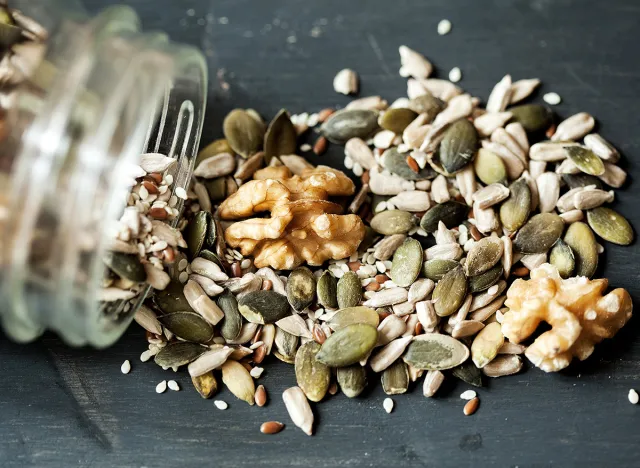
Nuts and seeds are beneficial for blood pressure, but be mindful of the salt content. "Eating pistachios may lower blood pressure and cholesterol," says the NCOA. "These healthy nuts, best eaten unsalted, can add crunch and flavor to salads of all kinds. You can also blend them into pesto or enjoy a couple of handfuls as a snack."
RELATED: What Happens to Your Body When You Stop Eating Veggies
Limit Fatty Meats
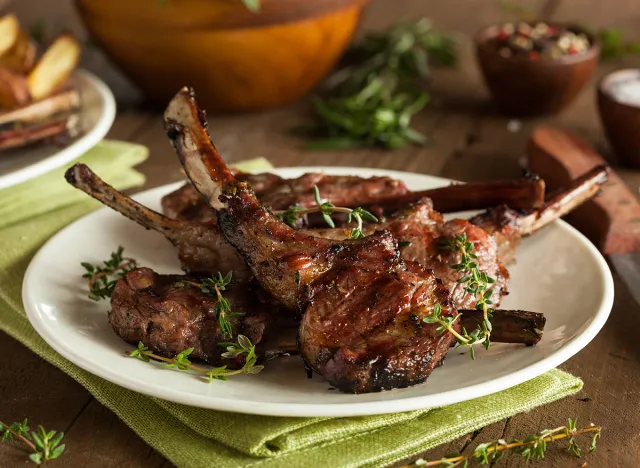
Fatty meats such as beef, pork, and lamb should be limited while on the DASH diet. "Deli meats, bacon, and hot dogs are all processed meats, which contain significant amounts of sodium or salt," according to The Queen's Health System. "In most cases, a diet high in salt will result in high blood pressure. Red meats such as beef, pork, and lamb are also known to trigger an increase in levels. It is best to limit and choose a leaner protein such as fish or chicken."
Limit Sweets
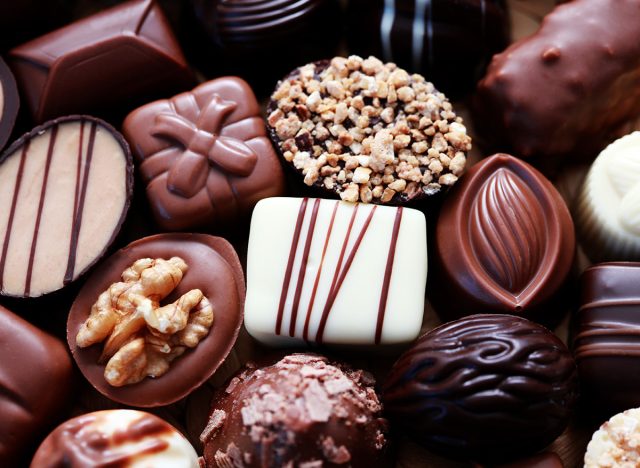
Sweets and added sugars are bad for your waistline and your blood pressure. "High levels of sugar in your blood can lead to something called atherosclerosis, according to Diabetes UK. "This is when there's a build-up of fatty material inside your blood vessels, narrowing them. The narrower the blood vessels, the more the pressure builds up."
Limit Sugary Drinks
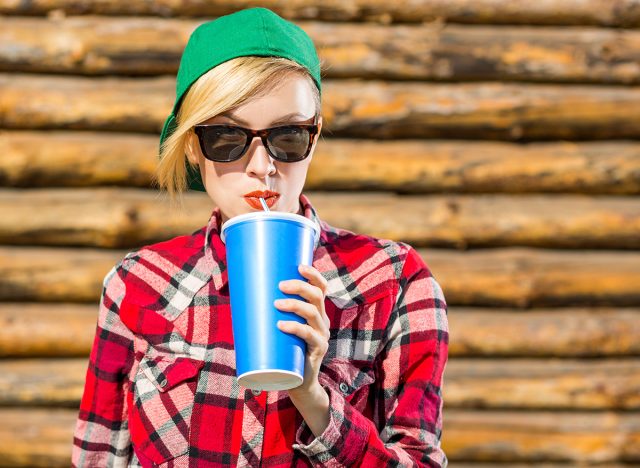
Sugar drinks and sodas are terrible for your waistline, and even one sugary drink a day is linked to higher blood pressure. "Sugary drinks add calories but don't fill you up, and people who drink them may not compensate for those extra calories by eating less food," says Harvard Health. "That leads to weight gain, which can raise blood pressure."
RELATED: 10 Critical Things You Need to Tell Your Doctor Before Starting Ozempic
Limit Sodium
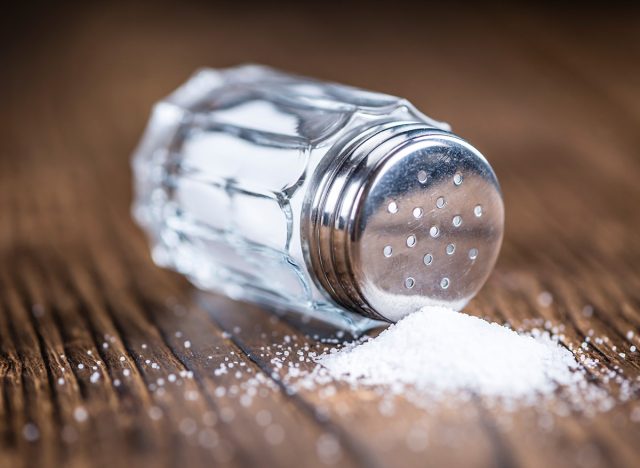
This is the big one—sodium must be limited. "I advise patients with hypertension to take the salt shaker off the table and instead use spices such as garlic, turmeric, and paprika, which add flavor and other health benefits to food," Amanda Stathos, MS, RD, LDN, tells Johns Hopkins. "Check with your dietitian or doctor to ensure you don't have any health conditions that would be aggravated by extra potassium," she says of salt substitutes. And if you enjoyed this article, take advantage of these 15 Quick Ways to Lose Body Fat Percentage in a Week.




